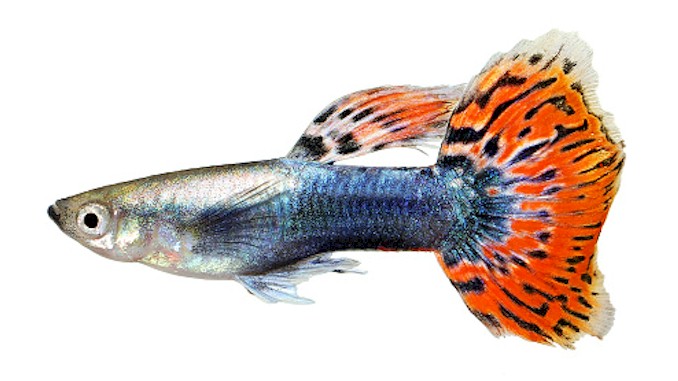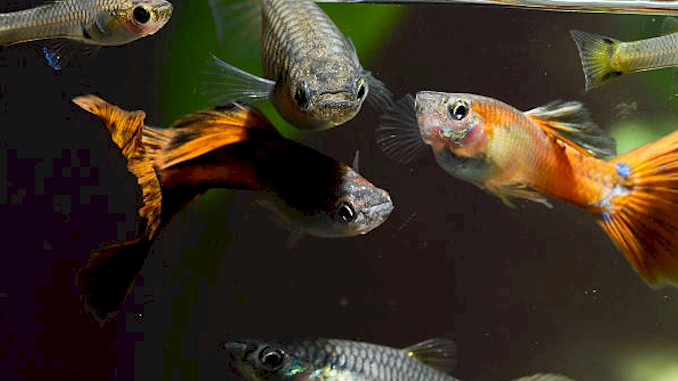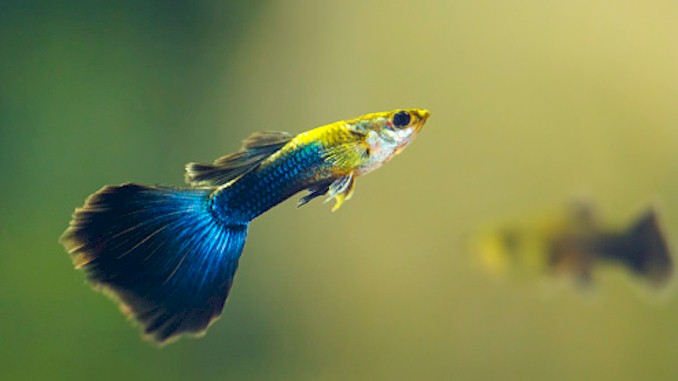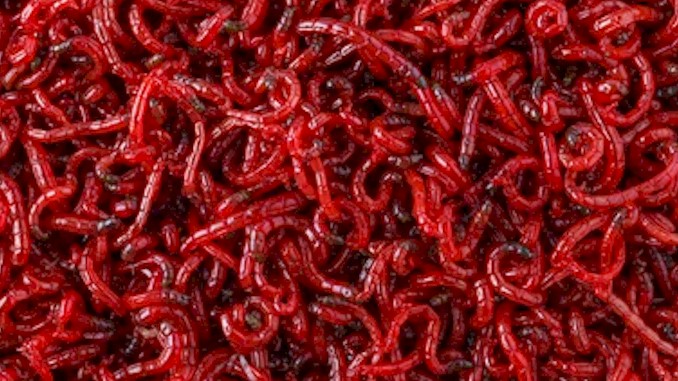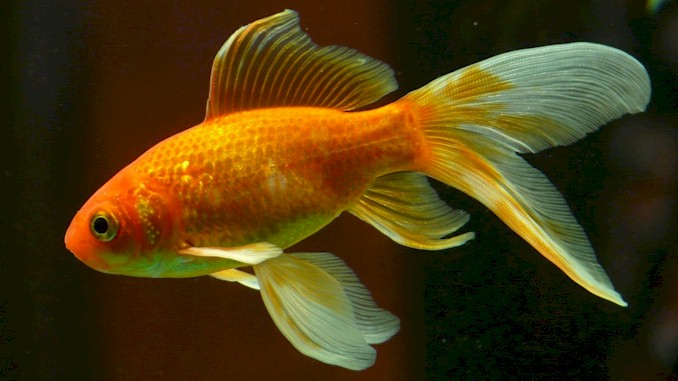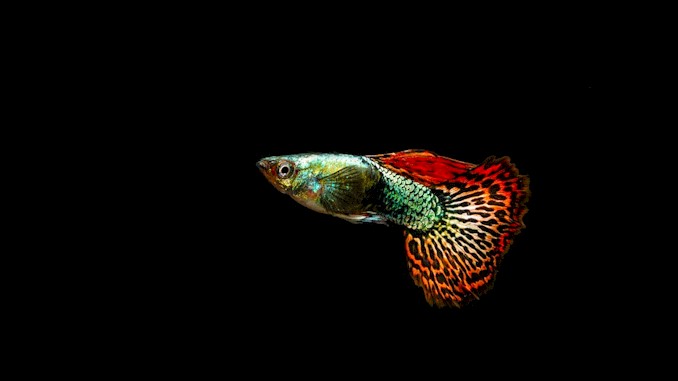Discover How Guppies Keep Your Tank Clean
If you’re a fish owner, it’s essential to maintain a clean and healthy environment for your aquatic pets. However, it can be confusing to determine which fish species can help keep your tank clean and which ones might actually contribute to the buildup of waste and debris. In this post, I’m going to share with you what I have learned from my own experiences and research about this subject, to help you to make informed decisions about maintaining the cleanliness of the aquarium.
Guppies may nibble on some debris and organic matter, they are not effective cleaners and cannot replace regular tank maintenance, even though guppies are known to eat algae and other small particles in the tank. Guppies should not be relied on as the sole means of keeping your tank clean.
However, there’s much more to learn about guppies and their role in maintaining a clean and healthy tank. In the following paragraphs, I’ll dive deeper into the topic and share some interesting insights into guppy behavior, their diet, and how they can contribute to the overall health of your aquarium. Whether you’re a seasoned fish owner or just starting out, you won’t want to miss this valuable information. So keep reading to discover everything you need to know about guppies and their impact on tank cleanliness.
The role of guppies in aquarium tank maintenance
While guppies are not the most efficient cleaners, they can play a small role in maintaining a healthy tank environment. Guppies are known to eat algae, small particles of uneaten food, and dead plant matter. However, it’s important to note that they cannot replace regular tank maintenance and should not be relied on as the sole means of keeping your tank clean.
Guppies are known for their active behavior, and they are constantly swimming around the tank. This activity can help circulate water and distribute nutrients and oxygen to the other inhabitants of the tank. Additionally, guppies are known to be hardy fish that can tolerate a wide range of water conditions. This hardiness can contribute to the overall health of the tank, as guppies can survive and thrive even in less than ideal conditions.
However, it’s essential to remember that guppies alone cannot maintain the cleanliness of the tank. Regular water changes, filtration systems, and the removal of debris are still necessary for maintaining a healthy tank environment. Guppies can certainly help, but they are not a replacement for good tank maintenance practices.
In conclusion, while guppies can play a small role in maintaining a clean and healthy aquarium environment, they are not the solution to all tank maintenance needs. It’s important to maintain regular tank maintenance practices and use appropriate filtration systems to ensure that your tank remains healthy and clean. By incorporating guppies into your tank and following proper maintenance practices, you can create a beautiful and thriving aquatic environment for your fish to enjoy.
Can guppies eat algae and other small particles in the tank?
This is a common question that many fish owners ask. The answer is yes, guppies can eat algae and other small particles in the tank. Algae is a common problem in aquariums, and it can quickly accumulate and make the tank look unsightly. Fortunately, guppies are known to eat algae, which can help keep the tank clean and healthy.
In addition to algae, guppies are known to eat small particles of uneaten food and dead plant matter. This can help prevent the buildup of organic waste in the tank and reduce the risk of ammonia spikes and other water quality issues. However, it’s important to note that guppies cannot eat all types of algae, and they cannot replace regular tank maintenance practices.
There are several types of algae that guppies can eat, including green algae, diatoms, and brown algae. However, they are not effective at eating red or blue-green algae, which require special treatment. Additionally, guppies are not able to eat larger pieces of debris, such as uneaten fish food or dead fish. These larger particles will need to be removed manually.
It’s also important to note that overfeeding your fish can lead to a buildup of uneaten food and waste in the tank, which can contribute to poor water quality. To prevent this, it’s recommended to feed your fish only what they can eat in a few minutes and remove any uneaten food.
In conclusion, while guppies can eat algae and other small particles in the tank, they cannot replace regular tank maintenance practices. It’s important to keep the tank clean and well-maintained to prevent the buildup of waste and debris. By incorporating guppies into your tank and following proper maintenance practices, you can create a healthy and thriving aquarium environment for your fish to enjoy.
The importance of regular tank maintenance and cleaning
Even with the help of guppies and other fish, it’s important to regularly clean and maintain your tank to ensure that it remains healthy and thriving. Neglecting regular maintenance can lead to a buildup of waste, debris, and harmful bacteria, which can ultimately harm your fish and other aquatic inhabitants.
One of the most important aspects of regular tank maintenance is water changes. It’s recommended to change 10-20% of the water in your tank every 1-2 weeks, depending on the size of your tank and the number of fish and other inhabitants. This can help remove excess nutrients, waste, and other pollutants from the water, which can improve water quality and reduce the risk of harmful bacteria and other issues.
Another important aspect of tank maintenance is cleaning the tank itself. This involves removing any debris, uneaten food, and waste from the tank, as well as cleaning the substrate and decorations. It’s also important to regularly clean the filter to prevent the buildup of harmful bacteria and other pollutants.
Testing the water quality is another important aspect of regular tank maintenance. This involves testing for ammonia, nitrite, nitrate, pH, and other factors that can affect the health of your fish and other inhabitants. By regularly testing the water quality, you can identify and address any issues before they become more serious.
Finally, it’s important to monitor the health of your fish and other inhabitants. This involves watching for signs of illness or distress, such as abnormal swimming behavior, loss of appetite, or visible signs of disease. By addressing any health issues promptly, you can prevent them from spreading to other inhabitants and ensure the overall health of your tank.
In conclusion, regular tank maintenance and cleaning are essential for maintaining a healthy and thriving aquarium environment. By incorporating guppies into your tank and following proper maintenance practices, you can create a beautiful and healthy aquatic environment for your fish to enjoy. Don’t neglect regular maintenance and cleaning, as this can lead to serious issues and harm your fish and other inhabitants.
How guppy behavior can affect tank cleanliness
Guppies are known for their active and playful behavior, but their actions can also have an impact on the cleanliness of your tank. Understanding how guppy behavior can affect tank cleanliness can help you take proactive steps to maintain a healthy and thriving aquarium environment.
One behavior to be aware of is guppy feeding habits. Guppies are known for their voracious appetites, and they can quickly devour any food that is added to the tank. However, uneaten food can quickly accumulate in the tank and contribute to the buildup of waste and harmful bacteria. It’s important to only feed your guppies what they can eat in a few minutes and remove any excess food from the tank.
Guppies also produce waste, which can contribute to the buildup of harmful pollutants in the tank. In addition, guppies are known for their fast and frequent swimming, which can stir up the substrate and release debris into the water. This can make the water cloudy and contribute to the buildup of waste in the tank.
Another behavior to be aware of is guppy breeding. Guppies are known for their prolific breeding habits, and if left unchecked, they can quickly overpopulate a tank. Overcrowding can lead to increased waste production and a greater risk of disease and other health issues. It’s important to monitor guppy breeding and take steps to control the population if necessary.
Lastly, guppies can also be aggressive towards other fish and inhabitants in the tank. Aggression can lead to injury and stress, which can weaken the immune system of the affected fish and increase the risk of disease. It’s important to carefully select compatible tank mates and monitor guppy behavior to ensure that they are not causing harm to others in the tank.
In conclusion, understanding how guppy behavior can affect tank cleanliness is an important aspect of maintaining a healthy and thriving aquarium environment. By monitoring guppy feeding habits, waste production, breeding, and aggression, you can take proactive steps to maintain water quality and prevent the buildup of harmful pollutants in the tank. Don’t overlook the impact of guppy behavior on tank cleanliness, as this can ultimately impact the health and wellbeing of all inhabitants in the tank.
Other ways to keep your aquarium clean and healthy
While guppies can play a significant role in maintaining a clean and healthy aquarium, there are also other strategies you can use to ensure the long-term health and wellbeing of your aquatic environment.
One important strategy is to perform regular water changes. Water changes help to remove accumulated waste and pollutants from the tank, and also replenish essential nutrients and minerals that may be depleted over time. It’s recommended to change between 10-25% of the water in your tank every 1-2 weeks, depending on the size and type of tank.
Another important aspect of aquarium maintenance is the use of appropriate filtration systems. Filters help to remove debris, waste, and harmful bacteria from the water, and can significantly improve water quality. There are several different types of filters available, including sponge filters, hang-on-back filters, and canister filters, each with their own unique advantages and disadvantages.
It’s also important to maintain appropriate water parameters, such as pH, temperature, and water hardness, to ensure that your aquatic inhabitants remain healthy and thrive. Different species of fish and aquatic plants have different requirements, so it’s important to research and understand the specific needs of your tank inhabitants and make any necessary adjustments.
In addition to these strategies, there are several other ways to promote a healthy and thriving aquarium environment. For example, incorporating live plants into your tank can help to oxygenate the water, absorb excess nutrients, and provide hiding places and grazing areas for your fish. Using a gravel vacuum or other substrate cleaning tool can help to remove debris and waste from the bottom of the tank, and prevent the buildup of harmful bacteria.
Ultimately, the key to maintaining a clean and healthy aquarium is to be proactive and consistent in your approach to tank maintenance. By incorporating a variety of strategies, including regular water changes, appropriate filtration, monitoring water parameters, and other techniques, you can ensure that your aquarium remains a thriving and beautiful ecosystem for years to come.

